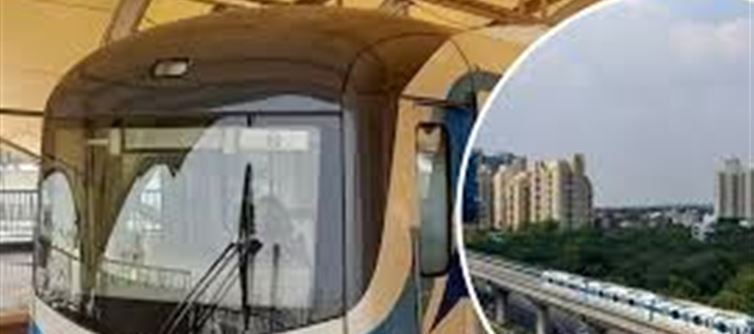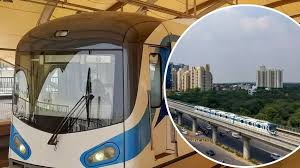
Introduction
In a significant boost to Gurugram's public transportation infrastructure, the haryana mass Rapid Transit Corporation (HMRTC) is gearing up to revolutionize connectivity between the bustling urban hub of Sector 56 and the rapidly developing Pachgaon area. This upcoming metro line promises to alleviate traffic congestion, reduce commute times, and promote sustainable urban mobility for residents and workers in the National capital Region (NCR). With the Detailed Project Report (DPR) slated for submission within the next week, the project is entering a crucial phase of planning and approval.
Project Background
The Gurugram-Pachgaon Metro Line is part of the broader expansion of the gurgaon Metro network, aimed at integrating peripheral and emerging residential-commercial zones into the city's efficient mass transit system. HMRTC, a state-owned entity responsible for developing and operating metro rail projects in haryana, has been working on this corridor to address the growing demand for reliable public transport in southern Gurugram. The project aligns with the haryana government's vision to enhance connectivity under the haryana Urban Development Mission and support the region's economic growth.
Announced as a key initiative in recent urban development plans, the metro line will span approximately 12-15 kilometers, connecting key sectors and landmarks. It is expected to integrate seamlessly with the existing Rapid Metro network at Sector 56, providing onward connectivity to Cyber City, HUDA City Centre, and beyond.
Key Project Details
Length: Around 13 kilometers (subject to final DPR confirmation).
Type: Elevated metro corridor with modern driverless trains.
Estimated Cost: ₹2,500-3,000 crore, funded through a mix of state, central government, and possibly public-private partnerships.
Timeline: DPR submission by end of this week (September 2025); construction to commence post-approval in early 2026, with operations targeted for 2029-2030.
Capacity: Designed to handle 30,000-40,000 passengers per hour in peak direction, featuring air-conditioned coaches and accessibility features for differently-abled individuals.
The project emphasizes green technology, including energy-efficient signaling systems and solar-powered stations, in line with sustainable development goals.
Route and Stations
The proposed route will start from Sector 56 Rapid Metro Station and head southwards towards Pachgaon, traversing through high-density residential and industrial areas. The corridor will feature 10-12 stations, strategically placed to serve educational institutions, IT parks, and residential townships. Here's a tentative list of stations along the route:
Station No.
Station Name
Key Connections/Highlights
1 Sector 56
Interchange with existing Rapid Metro
2 Sector 55/57
Near major residential societies
3 Sector 49
Proximity to schools and markets
4 Sohna Road Junction
Link to Sohna highway and bus terminus
5 Sector 47
Industrial and commercial hubs
6 rajiv gandhi Education City
Access to universities and tech parks
7 Sector 67
Emerging residential area
8 Sector 68
Near golf course and luxury housing
9 Pachgaon Village
Rural-urban interface, local markets
10 Pachgaon Terminal
Depot and future extension point
Note: Station names and exact alignments may be refined in the final DPR.
This route will not only connect underserved southern sectors but also pave the way for future extensions towards Sohna and Rewari, enhancing regional integration.
Significance and Benefits
The introduction of this metro line is poised to transform Gurugram's southern periphery:
Traffic Decongestion: Expected to divert over 50,000 private vehicles daily from Sohna Road, reducing pollution and travel time by up to 60%.
Economic Boost: Improved access to employment centers in Sector 56 and rajiv gandhi Education City will spur real estate development and job creation in Pachgaon.
Affordable Commute: Fares projected at ₹20-50 per trip, making it accessible for daily wage earners and students.
Environmental Impact: Shift to public transport could cut carbon emissions by 20-30% in the corridor.
Social Equity: Bridges the gap between urban elites in Cyber City and emerging lower-middle-class habitats in Pachgaon.
Local stakeholders, including resident welfare associations and business chambers, have welcomed the move, citing it as a long-overdue infrastructure upgrade.
Challenges and Next Steps
While the project enjoys strong support, potential hurdles include land acquisition in densely populated areas and coordination with the Gurugram Metropolitan Development Authority (GMDA). Environmental clearances and public consultations will be integral to the approval process.
Following DPR submission to the state government and the Ministry of Housing and Urban Affairs, the report will undergo technical scrutiny. HMRTC aims to secure central funding under the Metro rail Policy 2023. Public hearings are scheduled for october 2025 to incorporate community feedback.
Conclusion
The Gurugram Sector 56 to Pachgaon Metro Line represents a forward-thinking step towards a more connected and livable Gurugram. As HMRTC finalizes the DPR this week, residents can look forward to a future where commuting is seamless, sustainable, and swift. Stay tuned for updates on approvals and groundbreaking ceremonies—this corridor could soon become the lifeline of southern Gurugram.
Disclaimer:
The views and opinions expressed in this article are those of the author and do not necessarily reflect the official policy or position of any agency, organization, employer, or company. All information provided is for general informational purposes only. While every effort has been made to ensure accuracy, we make no representations or warranties of any kind, express or implied, about the completeness, reliability, or suitability of the information contained herein. Readers are advised to verify facts and seek professional advice where necessary. Any reliance placed on such information is strictly at the reader’s own risk.





 click and follow Indiaherald WhatsApp channel
click and follow Indiaherald WhatsApp channel